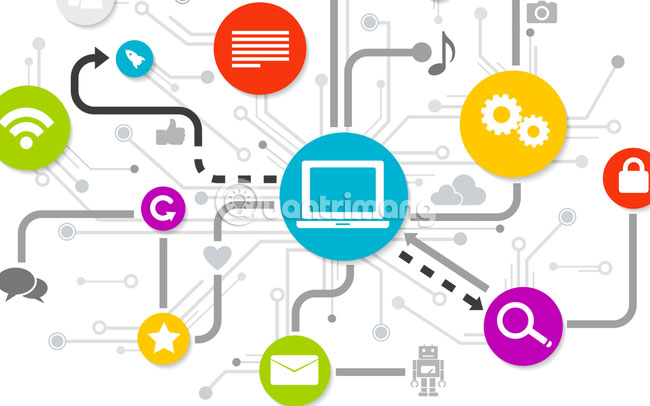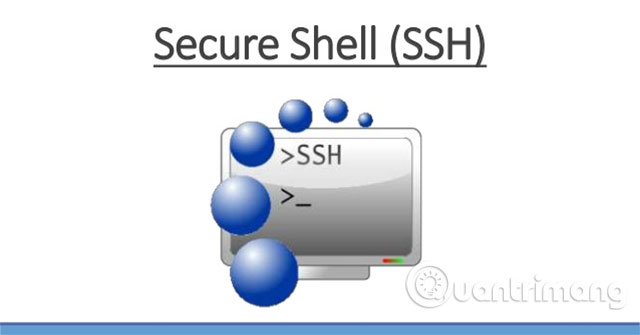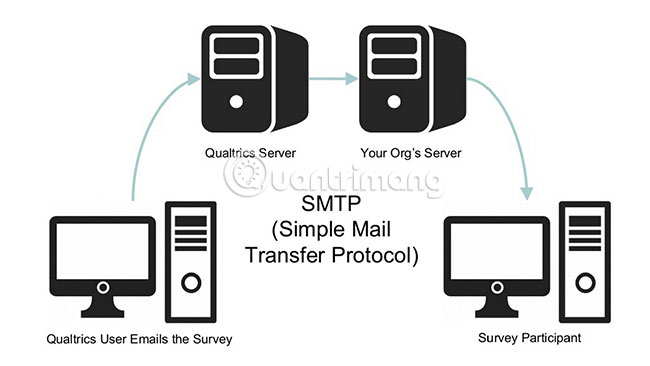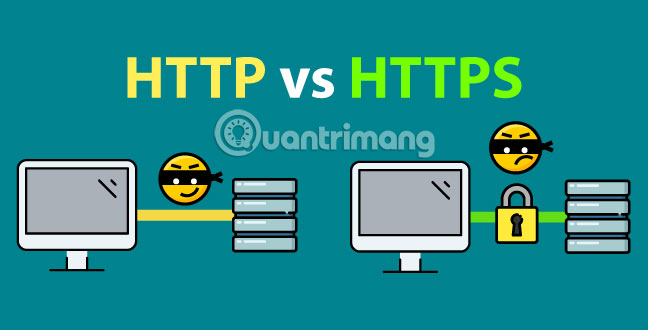Popular network protocols today
There are many protocols while establishing a connection on the Internet. Based on the type of connection to be established, the protocols used are also varied. These protocols define the characteristics of the connection. Let's find out what those protocols are through the following article!
Learn about the main network protocols
- What is the network protocol?
- Popular network protocols today
- Internet Protocol Suite
- Protocol Stack
- Transmission Control Protocol (TCP)
- Internet Protocol (IP)
- Hypertext Transfer Protocol (HTTP)
- File Transfer Protocol (FTP)
- Secured Shell (SSH)
- Telnet
- Simple Mail Transfer Protocol (SMTP)
- Domain Name System (DNS)
- Post Office Protocol version 3 (POP 3)
- Internet Message Access Protocol (IMAP)
- Simple Network Management Protocol (SNMP)
- Hypertext Transfer Protocol over SSL / TLS (HTTPS)
What is the network protocol?
Simply put, the protocol is a set of rules. Network protocols are a set of rules that the network must follow. Network protocols are official standards and policies made up of rules, processes and formats that define communication between two or more devices over the network. Network protocols implement actions, policies, and problem-solving from beginning to end, so that the network or data communication process takes place promptly, securely, and managed. Network protocols define communication rules and conventions.

The network protocol incorporates all process requirements and has constraints when computers, routers, servers and other network-enabled devices begin to communicate. Network protocols must be verified and installed by the sender and recipient to ensure the data communication / network process goes smoothly. Network protocols also apply communication software and hardware nodes on the network. There are several types of network protocols as follows.
Popular network protocols today
Internet Protocol Suite
Internet Protocol Suite is a collection of protocol stack implementation protocols that the Internet runs on. Internet Protocol Suite is sometimes called TCP / IP protocol suite. TCP and IP are important protocols in Internet Protocol Suite - Transmission Control Protocol (TCP) and Internet Protocol (IP). The Internet Protocol Suite is similar to the OSI model, but there are some differences. Also, not all layers (layers) correspond well.
Protocol Stack
Protocol Stack is a full set of protocol layers, working together to provide network connectivity.
Transmission Control Protocol (TCP)

Transmission Control Protocol (TCP) is the core protocol of Internet Protocol Suite. Transmission Control Protocol originates from network implementation, complementing Internet Protocol. Therefore, Internet Protocol Suite is often called TCP / IP. TCP provides a reliable way of distributing a stream of octets (8-bit data blocks) over an IP network. The main feature of TCP is the ability to issue commands and check for errors. All major Internet applications such as World Wide Web, email and file transfer are based on TCP.
Internet Protocol (IP)
Internet Protocol is the main protocol in Internet protocol suite to forward data over the network. Internet Protocol's routing function basically helps set up the Internet. Previously, this protocol was a disconnected service datagram in the original Transmission Control Program (TCP). Therefore, Internet protocol suite is also called TCP / IP.
Hypertext Transfer Protocol (HTTP)
HTTP is the data communication platform for the World Wide Web. Hypertext is a structured text that uses hyperlinks between nodes containing text. HTTP is the application protocol for distributed and combined hypermedia information systems.
The default HTTP port is 80 and 443. These two ports are secure.
File Transfer Protocol (FTP)
FTP is the most common protocol used for file transfer purposes on the Internet and in private networks.
The default port of FTP is 20/21.
Secured Shell (SSH)

SSH is the main method used to manage network devices securely at the command level. SSH is often used as an alternative to Telnet, because this protocol does not support secure connections.
The default port of SSH is 22.
Telnet
Telnet is the main method used to manage network devices at the command level. Unlike SSH, Telnet does not provide secure connections, but only provides basic, unsecured connections.
Telnet's default port is 23.
Simple Mail Transfer Protocol (SMTP)
SMTP is used with two main functions: Transfer email from the source mail server to the destination mail server and transfer the email from the end user to the mail system.
The default port of SMTP is 25 and the SMTP secure port (SMTPS) is 465 (Not standard).

Domain Name System (DNS)
Domain Name System (DNS) is used to convert domain names into IP addresses. DNS hierarchy includes root server, TLD and authoritative server.
The default port of DNS is 53.
Post Office Protocol version 3 (POP 3)
Post Office Protocol version 3 is one of the two main protocols used to retrieve mail from the Internet. POP 3 is very simple because this protocol allows the client to get the complete content from the server's mailbox and delete content from that server.
The default port of POP3 is 110 and the port is secured as 995.
Internet Message Access Protocol (IMAP)
IMAP version 3 is another major protocol used to retrieve mail from servers. IMAP does not remove content from the server mailbox.
The default port of IMAP is 143 and the secured port is 993.
Simple Network Management Protocol (SNMP)
Simple Network Management Protocol is used for network management. SNMP has the ability to monitor, configure and control network devices. SNMP trap can also be configured on network devices, to notify the central server when specific actions occur.
The default port of SNMP is 161/162.

Hypertext Transfer Protocol over SSL / TLS (HTTPS)
HTTPS is used with HTTP to provide similar services, but with a secure connection provided by SSL or TLS.
The default port of HTTPS is 443.
You should read it
- How HTTP works
- Knowledge of TCP / IP network protocols
- Learn about the IMAP protocol
- MQTT and HTTP: Which protocol is better in the IoT era?
- 5 ways to improve website speed with HTTP / 2
- Learn about Telnet protocol
- What is Post Office Protocol (POP)?
- Differentiate POP and IMAP
- How to choose the best connection protocol for IoT devices
- What are IKE and IKEv2 VPN protocols?
- Internet: Transport layer protocols
- Wireless Application Protocol (WAP) price, marketcap, chart, and fundamentals info






 7 most popular email security protocols today
7 most popular email security protocols today Basic technical details about the Internet
Basic technical details about the Internet How to fix Network Protocols errors are Missing on Windows?
How to fix Network Protocols errors are Missing on Windows? What is UPnP? Why should you disable it on your router?
What is UPnP? Why should you disable it on your router? What is UPnP?
What is UPnP? New error detection in 4G LTE protocol
New error detection in 4G LTE protocol